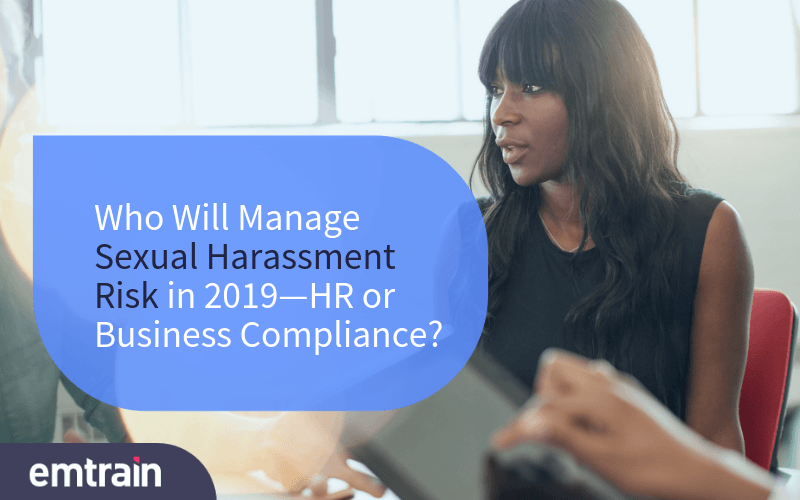About a month ago, I participated in a conference for ethics and compliance professionals— people who manage enterprise risk stemming from antitrust, intellectual property, privacy, information security, and other business compliance issues. A major trend I noticed was sexual harassment is increasingly on the agenda of business compliance professionals in a way that it wasn’t a year ago. And that begs the question±will business compliance professionals “own” sexual harassment rather than HR, given its increasing enterprise risk?
Increasing Overlap Between Compliance And HR
Business compliance professionals historically managed the risks associated with business activities, e.g., creating, marketing, and selling the business product or service. HR professionals historically managed the risks associated with managing the workforce, e.g., wage and hour, harassment, and discrimination.
Because of the larger risks they manage, business compliance professionals often have a larger budget than their HR peers and a closer advisory relationship with the C-Suite. But why is business compliance risk typically much larger than workforce risk? Because it stems from the mechanics of the business and can have wide social and economic impacts. Think Enron twenty years ago which manipulated energy markets and caused the collapse of Arthur Anderson Consulting. Or, more recently, think of Facebook and its protocol on user data and privacy, which led to Russian interference in the 2016 U.S. presidential election. Both incidents caused far-reaching social and economic impact. Compared to the manipulation of energy markets or presidential elections, managing harassment or discrimination claims affecting individuals or small groups of people appears relatively limited in scope.
How #MeToo Heightened The Business Risk from Harassment Claims
While harassment used to be a more limited workforce risk, #metoo and changing social values and demographics have significantly increased the nature of sexual harassment risk. Sexual harassment is no longer confined to litigation or claims expenses. Harassment can now trigger an organized protest (and walk out) like the one Google recently experienced, as well as the accompanying public scrutiny. Poor employee morale and public scrutiny can cause serious reputational and brand damage. And brand damage costs significantly more than a litigation matter or a settlement expense. In fact, brand damage can threaten the ongoing existence of the enterprise. So now that sexual harassment is causing brand damage, it’s become a serious enterprise risk and is increasingly on the business compliance agenda. Which leads to business compliance professionals—rather than HR professionals—advising the C-Suite about how to manage sexual harassment risk.
It would not be the first time that we’ve seen a changing of the guard regarding who owns a job function when that job has suddenly increased in importance or perceived business value. As an example, women were the first computer programmers during the 1940s. Grace Hopper invented the first computer language. But over time, and with the rise in personal computing, computer programming came to be seen as an increasingly important job. Only then did men jump in and dominate the field despite the fact that women initially held those roles.
This is HR’s Chance to Get a Seat at the Executive Table—But Only if They Step Up and Grab It Now With A Concrete Plan
It would be a missed opportunity for HR to allow business compliance professionals to take ownership of sexual harassment prevention as it becomes an increasingly important enterprise risk. Harassment stems from people dynamics—not business dynamics—and HR professionals are the experts at people dynamics and workforce issues.
In fact, the silver lining of the #MeToo movement is it gives HR professionals an opportunity to advise their C-Suite on the risk versus reward of investing in tools and people to transform workplace culture rather than doing the bare minimum and “checking a regulatory box.” HR professionals now is your time to step up and advise on this issue with a concrete action plan to ensure a healthy culture, and finally get a well-deserved seat at the executive table.








